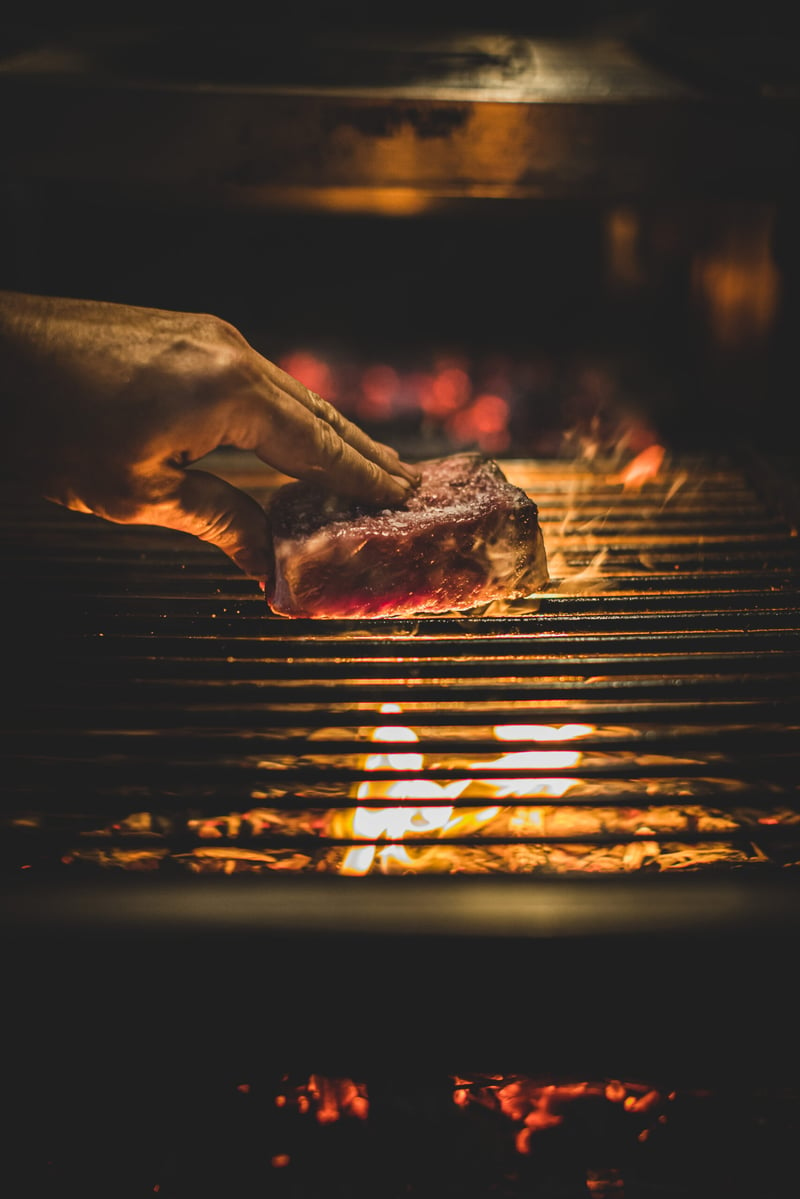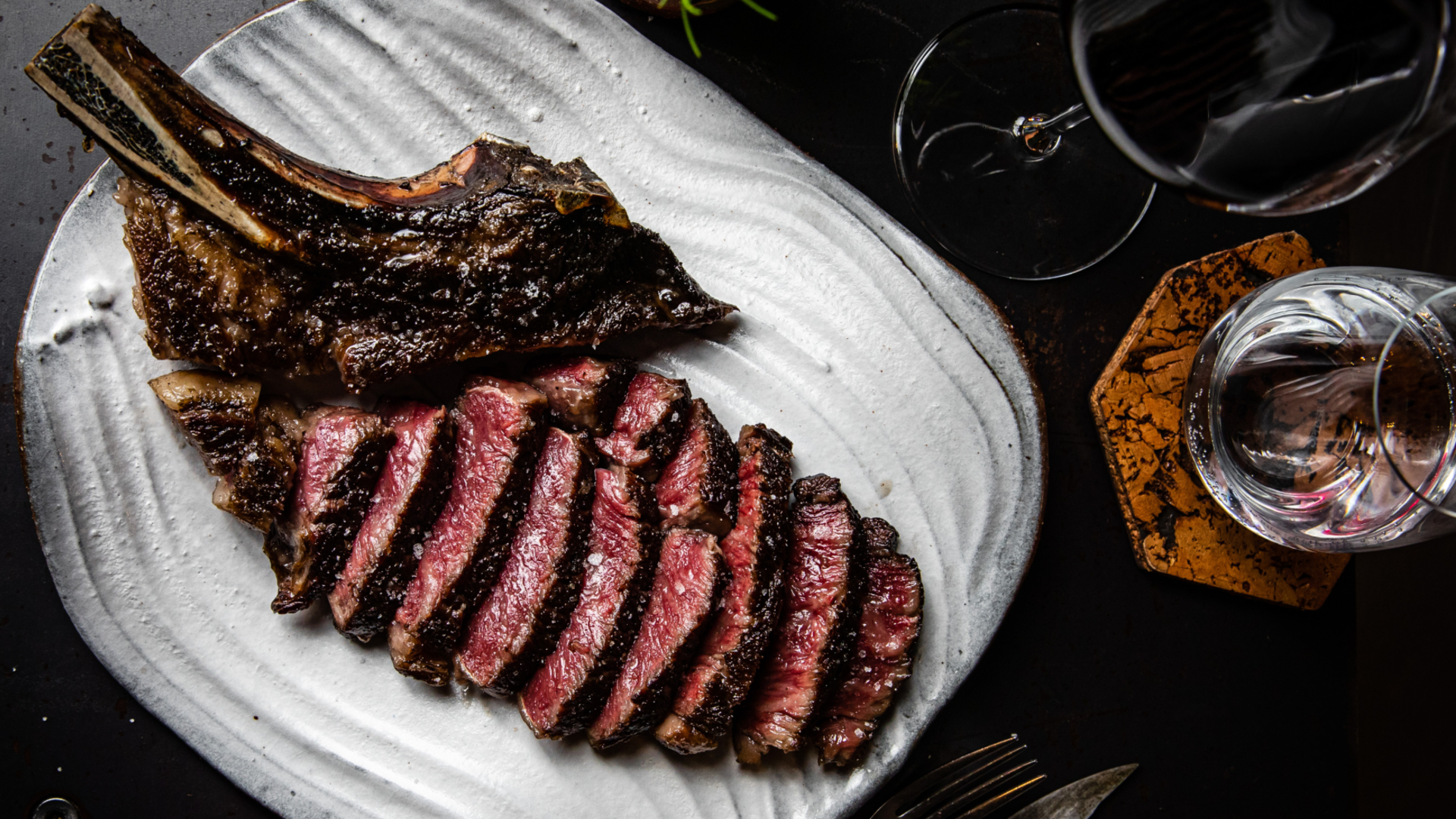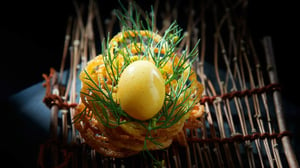Editor’s Note: This story originally appeared in Volume II of B.H. Magazine. For access to future issues, subscribe here.
As the chef and proprietor of Sydney’s Firedoor — former #3 establishment in the esteemed World’s Best Steaks ranking — Lennox Hastie knows a thing or two about grilling meats. Here are his crucial tips for flaming a restaurant-quality steak from the comfort of your own home.
Pick your pit
If you’re an amateur barbecuer, start simple. A kettle barbecue or a small fire pit works beautifully because it offers control without overwhelming you with too many features. The goal is to build an intimate relationship with the fire, so less is often more. Look for something that allows for airflow control and space to move the food around the grill — direct and indirect heat are key tools in your arsenal.
Choose your fuel
Wood is as much an ingredient as the food itself. Hardwoods like oak or fruitwoods like apple and cherry burn clean and impart subtle flavours, while something like grape vines or mesquite imparts a more intense smokiness. Charcoal is similar — opt for a natural lump charcoal over commercial briquettes. It burns hotter, cleaner, and retains the natural aromas of the wood, rather than the chemicals found in processed charcoals. Choose a wood that complements, rather than overwhelms, what you’re cooking.
Ready or not
You know your coals are ready when the embers glow red with a light dusting of white ash signalling an intense, clean, and consistent heat. Carefully hold your hand about six inches above the grill; if you can keep it there for 3-4 seconds before it becomes uncomfortable, you are in the right range. You don’t want to grill over open flames, but if the embers are too cool you won’t be able to develop a beautiful crust.
Season, season, season
When it comes to seasoning, keep it simple. I season generously with a fleur de sal when the steak hits the grill, allowing the fire and the meat to speak for themselves. Salt helps to form that lovely crust and draws out the moisture from the meat, concentrating its natural flavours. Like in all cooking, it is important to season at the beginning, during, and at the end.
Temperature check
Bringing the meat to room temperature before cooking is fundamental — and ensures an even cook. If you throw cold meat onto the grill, the outside will char before the inside even begins to warm. You want it to relax, for the fat to render and the meat to caramelise to a rich mahogany.

The question of flipping
I choose to only flip once to allow the meat sufficient time to form a delicious crust. I do, however, move the meat around regularly to try to avoid bar marks, which results in a very different flavour profile.
Resting is key
Resting is non-negotiable and as important as the cooking. Let the steak rest in a warm place for at least 8-10 minutes after it comes off the grill. The general rule of thumb is to allow it to rest for the same length of time it was cooking. This allows the juices to redistribute evenly throughout the meat. Be careful not to cover it as you will trap steam, softening the crust you worked so hard to create.
A cut above
Always cut against the grain. This shortens the muscle fibres, making each bite tender and easier to chew. Take your time — carving isn’t just about presentation. A well-carved steak can transform the whole experience. Always remember to re-season with salt before serving.
Tools of the trade
A carving fork is my weapon of choice and my right arm, which I use to move nearly everything on the grill from hot embers to steaks and vegetables, gives me full control without getting my hands too close to the fire.
I think meat thermometers have their place for beginners, but I have more of a hands-on approach. The act of cooking is reduced to experience, patience, and instinct. There’s something about touching the ingredient, learning its texture and response to the flame. Learn to feel the firmness of your steak — over time, you’ll know when it’s done without relying on gadgets.
The must-try cuts
I’m drawn to cuts that offer depth of flavour rather than just tenderness. Each cut responds differently to the flame, but all have that essential element of fat and muscle that transforms when kissed by fire.
- Ribeye
With three different muscles (longissimus, spinalis, complexus) a ribeye has different textures with a rich intermuscular fat that renders beautifully over fire, creating a crust that’s packed with flavour. - Denver or Chuck-Tail Flap
This cut has a great amount of marbling and strikes a balance between texture and flavour with a satisfying chew that stands up well to the flame. - Skirt
The longer, thinner outside skirt as it is often more tender and well-marbled than the inside skirt or flank. It also had a greater surface area and a lightly pleated appearance (from where it gets its name), which has the potential for greater caramelisation and therefore more flavour from the grill.

If you’ve enjoyed this feature story, consider a few of our other favourites from the pages of B.H. Magazine:
- The Rise & Rise Of New Balance
- The Self-Taught Aussie Watchmaker Crafting $50,000 Timepieces
- Daikoku: A Window Into The Soul Of Japan’s Mythical Car Scene
- Silk Shirts & Stolen Identity: Revisiting The Style Of ‘The Talented Mr. Ripley’
- The Business Of Beer: Australia’s Once Booming Craft Industry Is Now On Life Support











